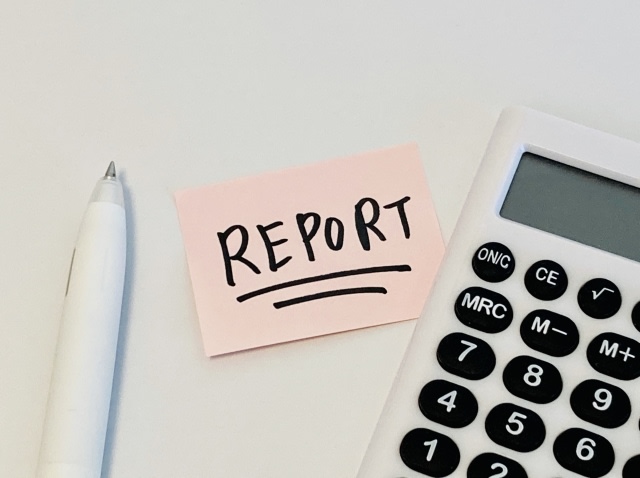Updated April 26, 2024
Navigating communication in the Japanese workplace: A guide
Communicating with your Japanese coworkers can be tough, no matter your language ability. You could all be speaking English, but something isn’t clicking.
Language is inseparable from culture. There are many unspoken rules — especially in the workplace. I won’t go into Japanese formal speech keigo in this article. I will focus on tips for communicating with your coworkers in both Japanese and English.
In this article: 📝
- 1. High context: Who does what?
- 2. Communication flow: What is the hierarchy?
- 3. Aizuchi: Are you listening?
- 4. Differing opinions: What if you disagree?
- 5. Making mistakes: Apologizing
- 6. A Japanese communication guide: Report, inform, consult
- 7. A Japanese communication guide: Keep it simple
- 8. Other things to consider
- 9. Japanese workplace communication
1. High context: Who does what?
You might see people calling Japanese a high context language with a lot of nonverbal communication, but what does this mean in the office?
In English, we have to be specific about the subject, verb, and object of a sentence when we speak or write. In Japanese, however, the subject of the sentence is often omitted, and sometimes the object can be too. Meaning can get lost in context, and assumptions will cause problems down the line.
It might seem like a no-brainer, but always confirm with your boss or colleagues who is going to do what and when. Make sure the information is shared with the team in meeting notes or emails. Confirming details shows that you were listening, and shows diligence.
If you are communicating in Japanese, you can always joke that in English you usually need a subject! (That’s what I do, at least.)
2. Communication flow: What is the hierarchy?

Japanese society has a strict hierarchy. This is especially true in the office. Even an employee that joined the company a few months before still has seniority over you.
There is always a reporting hierarchy. While you might bring up an issue directly in your home country, there might be a senior coworker, team leader, or another manager between you and your boss. You may have to tell them first when you want to bring an issue up with your boss.
I once had a proposal for another department. I contacted someone in that department at the same “level” as me and started to explain my plan. He got quite upset and reported me to my boss.
In this case, I should have told my boss what I wanted and had him tell the manager of the other department. That manager would then assign the task to the person I approached. I thought I was being efficient taking out the middleman, but I was disrupting the chain of communication – and approval.
Every decision also has an approval hierarchy. Depending on the size of your company, a proposal could go up several levels until it gets final approval. In some cases, it even arrives on the desk of the president. Be careful:
Don’t try to bypass rungs on the ladder. Follow the steps.
Be as clear as possible and cover all your bases. Your team leader or boss may be well-versed on a project or idea, but the executives might not.
Don’t get too impatient. The approval ladder can be long, and everyone is busy.
Don’t get discouraged if your project or idea doesn’t get approved. Even if your boss liked the idea, there could be other factors at play.
To bring back my example, the employee at the same “level” as me didn’t have any authority to make a decision. Only our bosses could give us approval and assign us to a task. Make sure to familiarize yourself with the reporting and approval process for smooth sailing.
3. Aizuchi: Are you listening?
When learning about Japanese communication, you might have stumbled upon aizuchi (相槌). These are small verbal acknowledgments that say, “Hey, I hear you.”
Silence is golden. But if you're silent while you listen, your Japanese coworker might think you don’t understand. Or worse — that you aren’t listening at all!
There are many different aizuchi. Some common ones are hai, un, and sou. They are simple enough. But be careful: sometimes your use of aizuchi can give the wrong impression.
I have gone through a few aizuchi because of the nuances when saying them repetitively. The first one is hai (yes). If you say it twice or three times in a row, “hai hai hai,” sounds like you are being dismissive, or like an exasperated teenager being scolded by a parent.
The same is true of sou (that’s right): If you say “sou sou sou” and it is new information or specialized knowledge, you sound like a know-it-all. (I’m guilty of this…) Un (yeah) is too casual for professional situations if you aren’t a manager.
Don’t get warned like me! I recommend picking something neutral like hai paired with a nod, and sticking to only saying it once at a time. The timing can be hard at first. Wait for your coworker to finish a thought or a request, and then say it. They will usually look at you waiting for the aizuchi.
Keep in mind that aizuchi are not required when you are listening to a presentation or in a large meeting. You can usually leave them out of an online meeting too, unless you are being spoken to directly.
4. Differing opinions: What if you disagree?
Saying no in Japanese is hard enough. But what if you’re in a meeting and the presenter says something you know is incorrect? Should you say something? Yes – but save it for after the meeting.
Directly correcting someone in front of other people embarrasses them and damages their reputation. You calling them out in front of other people also doesn’t reflect well on you. Or your boss! Talk to them privately after the meeting or follow up in an email.
If you aren’t confident you can explain yourself well, that’s all the more reason to write an email or talk about it one-on-one.
The same is true of expressing your subjective opinion. Tread lightly if the opinion differs from that of your boss or someone else higher up. If your opinion doesn’t add anything to the discussion, it’s best kept to yourself.
Ask yourself how important it is to let everyone know. Sometimes it does more harm than good to disrupt the flow.
5. Making mistakes: Apologizing

Apologizing is an art in Japan and apologizing is a form of politeness in and of itself. I am not going to go into the specific Japanese language part of it as that could be its own article. But here are some tips for when you really mess up and need to say sorry.
First, apologize! Be clear about what you did wrong and take responsibility for the outcome. But don’t go into too much detail about the reasoning behind your actions unless asked. Only the result matters. Talking too much about your thought process sounds like a huge excuse.
Finish it off by saying you will be careful from now on. Close with another apology for good measure!
If you are communicating in Japanese, one tip I got was to save your best keigo for when something really goes wrong. Don’t be too formal all the time or you will have no way to level up the seriousness of your apology.
I’ve been in situations where the path of least resistance was to take the fall and apologize first. Even if you think you’re right, it’s not worth rocking the boat, and may make you seem immature.
Living and working in a culture that is not your own is hard. You will make mistakes. But each failure teaches you something that success on the first try couldn’t. Just remember to be humble and apologize when you need to.
6. A Japanese communication guide: Report, inform, consult

One of the most important things to keep in mind for workplace communication as a professional in Japan is Hou-Ren-Sou. No, not spinach (hourensou), but houkoku (report) - renraku (inform) - soudan (consult).
• Houkoku (報告) “report”
Were you given a task? How is it going? Are you on schedule? Reporting the status of your tasks is crucial for workplace communication. If your manager isn’t getting off your back, it might be because you aren’t giving them regular updates.
Some workplaces have regular meetings where everyone reports their progress. But, if something drastic changes, don’t wait. Report it to your team in a timely manner.
Even if it is an embarrassing mistake, don’t hide it and try to fix it yourself. Your manager or boss should decide how to handle mistakes of a certain degree. This is especially true of mistakes that affect the whole company.
・Renraku (連絡) “inform”
Renraku means to contact or inform. In this case, it means to share important information with all involved parties. What are the facts? Tell it like it is. Be careful not to add your opinion or guesses.
Guesses could be misunderstood as facts and lead to trouble. Opinions, well… we covered that above.
You need to tell colleagues in a different department about the date of a meeting. Make sure you tell them it’s Wednesday at 2 P.M. in meeting room A. Not that it might be at 2 P.M., but not everyone has gotten back to you yet. Not that you wish it was on Thursday instead.
You have decision A, B, and C to tell everyone, but the decisions don’t all happen at the same time. Wait for C to be decided before informing everyone of A, B, and C. Contacting everyone over and over again looks like you aren’t on top of everything.
Sometimes things are time sensitive and decisions slow to be made. Keeping everyone updated is usually the best policy, even if the update is “not yet.”
• Soudan (相談) “consult”
I definitely do this the most, and you shouldn’t be afraid to. If you don’t know something, the most efficient solution is to ask.
In my experience, jobs either have detailed manuals for everything — or absolutely nothing. Make sure to review all the resources available to you first, of course, but don’t make judgements on your own. If you don’t know what to do, consult with someone.
The hierarchy also applies here. First ask a coworker who has been there longer than you, a senpai (先輩). Don’t skip them and go straight to your boss. Your senpai is supposed to teach you the ropes. They can also judge if the issue is serious and needs to go up the ladder.
Hou-Ren-Sou is crucial for communicating in the Japanese workplace. Remember: Report your progress, inform everyone of new information, and consult about questions you might have along the way. Here is a Japanese guide.
7. A Japanese communication guide: Keep it simple
This all seems so complicated! What can I do? Whether verbally or in writing, in English or in Japanese, remember to keep it simple. Japanese may be indirect, but as a foreigner, being understood is the most important thing.
Here is a simple guide for relaying information to your coworkers:
1. Greet them! The best way to say hello is otsukare sama desu (お疲れさまです).
2. Let them know what to expect. Is this a report? A question? A request?
3. Get into the message - but as simply as possible. If you give too many details, it will get confusing. Tell them what action you would like them to take.
4. When should they get back to you? If you need an answer, be specific about the when.
5. Apologize for bothering them while they are busy, but thanks in advance! (This is a handy Japanese phrase.)
Example: Report
Japanese |
English |
|
1. Greeting |
お疲れさまです。 |
Hello. (Idiomatic greeting) |
2. Subject |
報告があります。 |
I have an update. |
3. Detail |
企画書を作成していますが、予想以上に時間がかかっています。 |
I am currently writing the proposal, but it’s taking longer than I thought. |
4. Deadline |
明日中に送らせていただく予定です |
I will send it to you tomorrow. |
5. Closing |
ご迷惑をおかけしますが、よろしくお願いします。 |
I apologize for the trouble, but thanks for understanding. |
Example: Request
Japanese |
English |
|
1. Greeting |
お疲れさまです。 |
Hello. |
2. Subject |
お願いがあります。 |
I have a request. |
3. Detail |
A社に企画書を送りたいのですが、内容を確認していただけないでしょうか。 |
I want to send Company A the proposal. Can you look over it? |
4. Deadline |
明日の正午までにお戻しいただけますと助かります。 |
If you can get it back to me by noon tomorrow, that would be great. |
5. Closing |
お忙しい中恐縮ですが、よろしくお願いします。 |
Sorry for bothering you when you are busy, but thanks in advance. |
There are many different ways to report or make requests in Japanese. No coverage of keigo here, so these are just examples. By following this pattern in both Japanese and English, you will better be able to get your point across.
8. Other things to consider
1. Gestures
Gestures are culture specific, and can sometimes have wildly different meanings. Japanese people may have seen certain gestures in movies, but other gestures might be confusing. My worst and continual offense is “air quotes.”
Keep gestures to a minimum. It can be hard not to gesture when trying to get your point across in a foreign language, but your coworker’s eyes will go to your hands instead of you. Sometimes you really do have to sit on your hands. (But don’t cross your arms!)
2. Eye contact
A lot of Japanese communication guides mention eye contact. It’s true that making constant, direct eye contact will unsettle people, but it isn’t taboo to look someone in the eye.
Try looking at the area around their nose, or between their eyes. Look down at your notes if you are in a meeting. Go back and forth between these things and direct eye contact.
3. Facial expressions
Japanese people being “emotionless” is an overplayed stereotype, but you still want to be careful not to be too emotional at work. Don’t twist up your face or frown when someone is talking to you. Avoid making exaggerated expressions.
If you get angry or upset, the best thing you can do is excuse yourself until you are calm again.
9. Japanese workplace communication
Communicating in the Japanese workplace can be difficult. Office life is full of unsaid rules and hierarchy. What's more, Japanese grammar is difficult and sentences can be long. Being indirect is considered a form of politeness.
However, you don’t have to overcomplicate it. One of the best pieces of advice I got was to keep things short and clear. That way I was more likely to get my point across and not make confusing grammatical errors in Japanese.
Be aware of where you stand in the office hierarchy and stick to Hou-Ren-Sou. Talk to your team or boss if something isn’t going well. Your boss is also responsible for your well-being, so don’t be alarmed if they ask how you are feeling or want you to turn your webcam on now and again.
Communication is rooted in culture. Navigating the workplace in a foreign country is no easy task. There will be misunderstandings. You will make mistakes. But as long as you are willing to learn, you can thrive.
When communicating with your Japanese colleagues, just remember to keep things simple — no matter what the language.
Get Job Alerts
Sign up for our newsletter to get hand-picked tech jobs in Japan – straight to your inbox.







